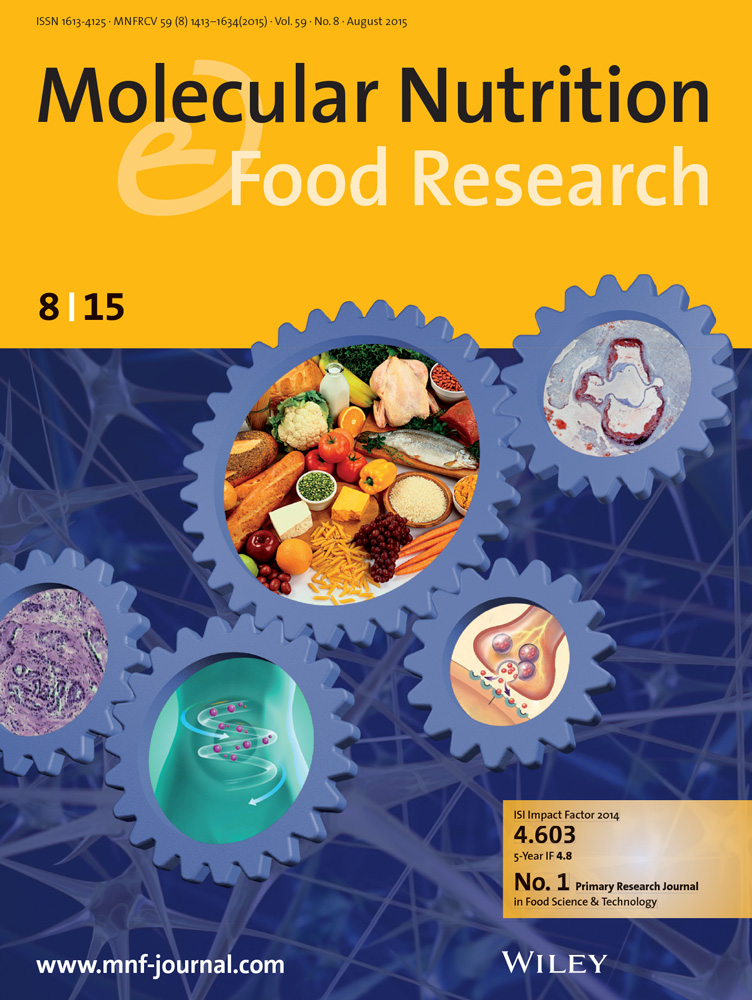Effect of the Fatty Acid Intake on Cognitive Function Through Gut Microbiota and Circulating microRNAs Remodeling in Middle-Aged and Elderly Overweight and Obese Population
IF 4.5
2区 农林科学
Q1 FOOD SCIENCE & TECHNOLOGY
引用次数: 0
Abstract
This study aimed to explore the role of fatty acids in regulating cognitive function through the gut microbiota (GM) and circulating microRNAs (miRNAs) by comprehensive analysis of dietary fatty acid intake (erythrocyte membrane fatty acid composition) and the GM and miRNAs in people with different body mass index (BMI). Participants with different BMIs in Beijing (normal weight [NW], overweight [OW], and obese [OB]) were recruited according to the Chinese obesity diagnostic criteria. Compared with the NW group, cognitive decline was observed in the OW and OB groups. Dietary saturated fatty acid (SFA) intake increased and dietary unsaturated fatty acid intake decreased in NW people. In the OW group, C18:3n-3 had beneficial mediation effects for cognition. Conversely, C18:3n-6 showed adverse cognitive effects in the mediating analysis. In the OW group, hsa-miR-142-5p presented a negative correlation with cognitive function. Erythrocyte membrane C23:0, as a good indicator of dietary fat intake, was found to influence cognitive function through Fusobacteriota, Proteobacteria, and plasma hsa-miR-144-3p in OB individuals. Different types of dietary fatty acid intake may affect the interaction between GM and miRNAs, and exert cognitive effects on middle-aged and elderly population, forming an interactive network of fatty acids-GM/miRNAs-cognition.

脂肪酸摄入通过肠道菌群和循环microrna重塑对中老年超重和肥胖人群认知功能的影响
本研究旨在通过综合分析不同体重指数(BMI)人群的膳食脂肪酸摄入量(红细胞膜脂肪酸组成)以及GM和miRNAs,探讨脂肪酸通过肠道微生物群(gut microbiota, GM)和循环microRNAs (circular microRNAs, miRNAs)调节认知功能的作用。根据中国肥胖诊断标准招募北京地区不同bmi(正常体重[NW]、超重[OW]和肥胖[OB])的参与者。与NW组相比,OW组和OB组均出现认知能力下降。西北地区人群日粮饱和脂肪酸(SFA)摄入量增加,日粮不饱和脂肪酸摄入量减少。在OW组,C18:3n-3对认知有有益的中介作用。相反,C18:3n-6在中介分析中表现出不利的认知效应。在OW组,hsa-miR-142-5p与认知功能呈负相关。红细胞膜C23:0作为膳食脂肪摄入量的良好指标,被发现通过梭杆菌、变形杆菌和血浆hsa-miR-144-3p影响OB个体的认知功能。不同类型的膳食脂肪酸摄入可能会影响GM与miRNAs的相互作用,并对中老年人群产生认知效应,形成脂肪酸-GM/miRNAs-认知的相互作用网络。
本文章由计算机程序翻译,如有差异,请以英文原文为准。
求助全文
约1分钟内获得全文
求助全文
来源期刊

Molecular Nutrition & Food Research
工程技术-食品科技
CiteScore
8.70
自引率
1.90%
发文量
250
审稿时长
1.7 months
期刊介绍:
Molecular Nutrition & Food Research is a primary research journal devoted to health, safety and all aspects of molecular nutrition such as nutritional biochemistry, nutrigenomics and metabolomics aiming to link the information arising from related disciplines:
Bioactivity: Nutritional and medical effects of food constituents including bioavailability and kinetics.
Immunology: Understanding the interactions of food and the immune system.
Microbiology: Food spoilage, food pathogens, chemical and physical approaches of fermented foods and novel microbial processes.
Chemistry: Isolation and analysis of bioactive food ingredients while considering environmental aspects.
 求助内容:
求助内容: 应助结果提醒方式:
应助结果提醒方式:


